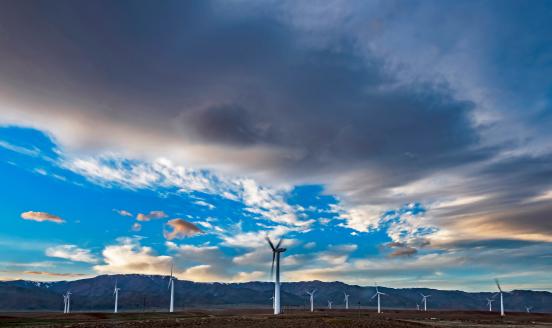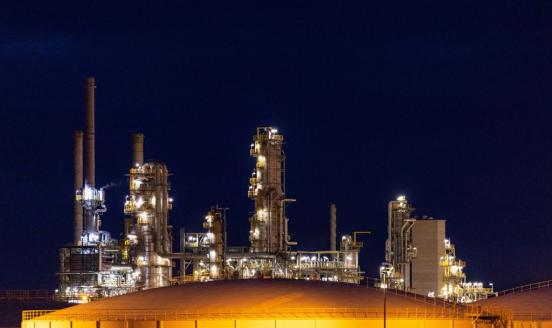Renewing Europe’s renewables
As the economic crisis shifted policymakers’ attention from long-term sustainability to short-term recovery, progress has stalled – and the conse
This article was published by Project Syndicate.
In 2008, the European Union adopted its 2020 climate and energy package, committing itself to a 20% reduction in greenhouse-gas emissions from 1990 levels, an increase in the share of energy generated from renewable resources to 20%, and a 20% improvement in energy efficiency over the next 12 years. But, as the subsequent economic crisis shifted policymakers’ attention from long-term sustainability to short-term recovery, progress stalled – and the consequences could be dramatic.
Of course, this is not the case only in Europe. Economic pressure – together with new access to vast stores of cheap fossil fuels in countries like the United States, Canada, and Australia – has made a global emissions-reduction agreement less likely today than it was six years ago.
But Europe has long been a global leader in sustainability initiatives, including renewable-energy development and deployment. A waning European commitment to these goals could undercut efforts to mitigate climate change. Already, the chances of limiting global warming to 2º Celsius above pre-industrial levels – the threshold beyond which the risk of devastating effects is no longer negligible – are slim, at best.
It has been suggested that Europe’s leaders should abandon their renewable-energy ambitions in favor of gradual decarbonization, in the hope that the rest of the world will eventually follow suit. But this would be inadequate to mitigate global warming – not least because European carbon emissions will fall to less then 10% in the next decade, making them negligible on a global scale.
Where Europe can really make a difference is in pioneering the development of cost-competitive renewables, which are critical to enabling emerging and developing economies to overcome their addiction to cheap fossil fuels. In other words, Europe should work to ensure that low-carbon sources can meet countries’ energy needs at roughly the same cost as their conventional counterparts.
This poses a major challenge, given that the system cost of renewables (the cost of generating a kilowatt-hour of electricity at any given moment) remains significantly higher than that of conventional sources. For example, in Germany, a system of solar panels and storage capable of guaranteeing electricity around the clock would cost about ten times more than a lignite power plant.
Making renewables cost-competitive with fossil fuels will require considerable up-front investment. Unfortunately, the private sector is unlikely to deliver it, which is understandable. Financing the development of low-carbon energy technologies, while fossil-fueled competitors face only a modest carbon price, is simply bad business.
That leaves it up to EU governments to devise an effective strategy to advance global renewable-energy use. So far, Europe’s strategy for promoting renewables has centered on “deployment,” with discussions limited to whether green certificates, renewables standards, or feed-in tariffs are the most cost-effective tool for the job.
But the rapid deployment of the cheapest available renewable-energy technology turned out to be extremely costly. Worse, it weakened the incentive for producers to compete on much-needed innovation, with the ten largest solar-panel producers spending less than 5% – most of them less than 2% – on research and development, compared to 10-20% in the semiconductors sector. Rather than measuring Europe’s success in advancing renewable-energy use in terms of the number of wind turbines and solar panels installed, its performance should be assessed according to the cost reduction achieved by these technologies.
This is not to say that the deployment-based strategy is all bad. The predictable deployment of certain technologies could encourage targeted private R&D and generate learning-by-doing. The cost of photovoltaic cells has dropped from about $5 per watt of installed capacity in 2000 to below $1 today. And more renewables in the system means higher demand for networks, storage, and demand response. But, while renewables deployment does, to some extent, encourage investment and innovation in complementary technologies, it is not enough. Direct support for R&D is also needed.
As it stands, Europe spends on renewables deployment more than 100 times what it spends on the relevant R&D. If half of the €30 billion ($41.5 billion) spent on deploying ten gigawatts of photovoltaic panels in 2009-2010 had been used to support R&D, the resulting innovation could have reduced the cost of solar panels much more than learning-by-doing from subsidized deployment. And, given the reduced cost of subsequent solar deployment – 65 gigawatts from 2010 to 2013 – the investment would likely have been recouped rather quickly.
If bringing down the cost is the target, a well-engineered mix of public R&D investment and deployment is the answer. Such innovation strategies must be tailored to each technology. Relatively mature technologies, such as onshore wind, need support for incremental improvements, while less-mature technologies, like third-generation biofuels, need backing for demonstration projects.
But, in both cases, deployment matters. Given that private investors will enter only when a sufficiently large market for each new technology becomes a realistic prospect, the expectation of deployment is critical to encouraging businesses to commercialize the technologies developed through publicly supported R&D.
Needless to say, the selection of projects for support should be transparent, technology-neutral, and re-evaluated regularly. If Europe – and, subsequently, the rest of the world – commits to such a strategy, the broad portfolio of technologies required for a resilient transition to a low-carbon economy can finally be realized.



